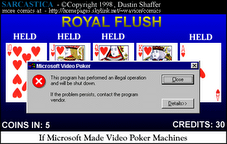Because you need to be aware of other technology in the chute and how that technology would impact the overall plan for networking the globe, I give you the femtocell concept.
Remember 3G is Hutchison's spearpoint into the telco/internet divide.
Netgear's announcement below tells me Longhorn's intentions are alive and well.
My BOLDS.
The age of the femtocell?
Ubiquisys gets set to startle the market
By Guy Kewney, Newswireless.net → More by this author
Published Friday 9th February 2007 18:48 GMT
There's nothing quite as hard for a venture capitalist as not gloating. When they "execute" on their exit strategy (sell off a company they launched) it seems they just can't help telling someone how clever they were - and from such a boast, it seems, comes the strong rumour that a new technology has hit centre stage.
The new technology is "femtocell" - smaller than a mobile cell, smaller than a microcell, and smaller even than a nanocell; usually, a mobile phone cell in the privacy of your home.
...news is good for Ubiquisys, ... and will startle the market, because while femtocells are seen as "the big new little thing" in mobile, nobody expected Ubiquisys backers to be able to execute on their exit strategy for another couple of years.
Best guess for who is providing the $150m plus to buy the out VCs is Avaya, the VoIP market leader in corporate comms, which is known to see femtocells as a threat to its current business model. Avaya needs to expand into the smaller business sector.
It (Avaya) recently announced plans to expand in the South Pacific SMB sector; an area where mobile phone usage has started using 3G technology, which is notoriously bad at penetrating buildings.
Femtocells provide a way of making 3G phones reliable inside buildings.
The technology puts a very small, low-power transmitter/receiver inside the building. The walls of the building prevent the signal from "leaking out" into the streets in exactly the same way they prevent the signal getting in in the first place; and the undoubted good security of the mobile phone network prevents hackers from using it to gain access to the corporate LAN.
And the internet sends the phone traffic to the cell.
Eventually, most femtocells will be in private homes, subsidised by the big operators, because of the "lock-in" they provide....
(And it can be argued there is no greater lock in for the home than Microsoft which makes the following article very much interesting in the greater scheme of things.)
Netgear promises 3G femtocells by end of year
Still hedging bets with Wi-Fi included, too
By Bill Ray
Published Tuesday 26th June 2007 16:25 GMT
Netgear has announced it will be using technology from Ubiquisys to embed 3G femtocells into a home gateway product by the end of the year, though the box will also have Wi-Fi; in addition to being a DSL modem and VoIP router.
Femtocells promise to spread 3G connectivity into homes, allowing your 3G handset to connect to your own local cell and have calls routed over your ADSL line, when you're at home; but that's only the beginning of what they can offer.
The femtocell also connects to the home network, enabling content on the phone to be streamed to devices around the home, such as TVs and stereo systems, as well as giving the user access to all the normal 3G services at up to 7.2Mb/sec (assuming their handset supports HSDPA).
Wide scale deployment of femtocells has the potential to make Wi-Fi networks redundant: why use a power-hungry, short-range, technology when the addition of a femtocell provides all the same functionality without the drawbacks?
Of course, such technology will only be available from network operators; they own the licences covering the frequencies that 3G operates in, and network operators are surprisingly conservative when it comes to new technologies, not to mention business models.
This announcement from Netgear puts the femtocell firmly in the consumer-electronics bracket and presents a real opportunity for network operators to unbalance the dominance of Wi-Fi. But if they have the nerve to take advantage of that opportunity remains to be seen.
Subscribe to:
Post Comments (Atom)






No comments:
Post a Comment